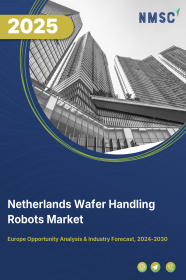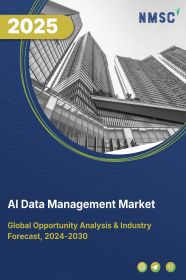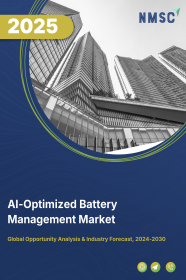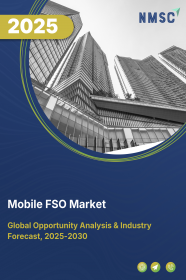
Netherlands Wafer Handling Robots Market by Product Type (Vacuum Wafer Handling Robots and Atmospheric Wafer Handling Robots), by Number of Arms (Single Arm and Dual Arm), by Robot Type (Linear Robots, SCARA Robots, Articulated Robots, Cylindrical Robot, and Others), by Operation (Motor Driven and Belt Driven), by Installation (Free Standing and Integrated), by End Use (Integrated Device Manufacturer (IDM) and Foundries) – Opportunity Analysis and Industry Forecast, 2024–2030
Industry: ICT & Media | Publish Date: 15-Feb-2025 | No of Pages: 169 | No. of Tables: 132 | No. of Figures: 97 | Format: PDF | Report Code : IC2095
Netherlands Wafer Handling Robots Market Definition
The Netherlands Wafer Handling Robots Market size was valued at USD 16.3 million in 2023, and is predicted to reach USD 35.1million by 2030, at a CAGR of 10.8% from 2024 to 2030. Also, the Netherlands wafer handling robots market size was 39.0 units in 2023, and is predicted to reach 139.0 units by 2030, with a CAGR of 19.0% from 2024 to 2030. A wafer handling robot represents a specialized robotic solution designed to streamline the complex procedures inherent in semiconductor manufacturing. These robots demonstrate exceptional proficiency in executing precise movements and positioning tasks with fragile semiconductor wafers.
Their significance lies in their pivotal role in the creation of top-tier integrated circuits and microelectronic devices. Operating within pristine cleanroom environments, they incorporate a diverse range of end effectors, sensors, and vision systems to securely grasp, inspect, and manipulate wafers, all while mitigating the risks of damage or contamination. By seamlessly integrating with other fabrication equipment, these robots not only boost operational efficiency and minimize errors but also foster the consistent production of cutting-edge semiconductor technologies that power an extensive array of contemporary devices.
Government Initiative to Increases Startup Companies Fuel the Growth of the Market
The increase in demand for wafer robots is driven by the rising initiative of the Dutch government to boost the production of startup companies. This reflects a concerted effort to stimulate innovation, foster economic growth, and position the Netherlands as a global hub for entrepreneurship and technological advancement. For instance, in May 2023, the Dutch government allocated $1 billion for the next seven years to establish the Netherlands as Europe's premier high-tech cluster. This initiative will channel investments into six key sectors: agrifood, biomedical production technology, energy, composites, laser-satellite communication, and semiconductors. The program aims to enhance the country's semiconductor production capabilities by leveraging the expertise of its participants, which include prominent entities such as ASML, the leading tech firm in Europe and a significant player in the chip industry. Consequently, this effort is poised to generate growth prospects for wafer handling robots within the country.
Growing Adoption of Automation Solutions Within Industries Boost the Netherlands Wafer Handling Robots Market Growth
The rising focus on efficiency and productivity across various sectors, there's an escalating need for automation solutions, especially within semiconductor manufacturing. Wafer handling robots are pivotal in this scenario, skillfully streamlining complex processes while meeting the critical requirements for precision and reliability in wafer handling. As manufacturers strive to refine their operations and adapt to dynamic market demands, the incorporation of wafer handling robots becomes not just advantageous but essential. These robots facilitate the seamless management of wafers throughout the production cycle, mitigating errors, shortening cycle times, and ultimately amplifying the efficiency of semiconductor manufacturing processes.
The High Prime Cost Acts as a Barrier to Market Growth
The significant cost linked with wafer handling robots presents a formidable obstacle to market growth. The initial investment required for acquiring, integrating, and maintaining these sophisticated automation systems poses a substantial financial burden for companies, especially those operating within limited budgets. This financial constraint has the potential to deter potential adopters from entering the market or expanding their automation capabilities.
Integration of Advance Technologies such as Artificial Intelligence Creates Future Opportunities for the Growth of the Market
Incorporating advanced technologies such as Artificial Intelligence (AI), computer vision, and the Internet of Things (IoT) into robots offers significant opportunities for market expansion. These integrations empower wafer handling robots to optimize processes, enhance operational efficiency, and enable predictive maintenance. AI algorithms are instrumental in refining robot movements, enhancing quality control by detecting defects in real-time, and forecasting maintenance needs. Computer vision ensures precise handling of wafers and accurate object recognition, even in complex operational environments, while IoT connectivity allows for real-time monitoring, data exchange, and predictive maintenance, thus reducing downtime. Additionally, the integration of advanced safety features, data analytics capabilities, and improvements in energy efficiency further underscore the vital role of wafer handling robots as essential assets in the ever-evolving semiconductor manufacturing industry.
Competitive Landscape
The Netherlands wafer handling robots industry comprises various market players, such as include Kawasaki Heavy Industries, Ltd., Nidec Instruments Corporation, Yaskawa Electric Corp., RORZE Corporation, DAIHEN Corporation, Hirata Corporation, Rexxam Co., Ltd., KUKA AG, ULVAC, Inc., and Stäubli International AG.
Netherlands Wafer Handling Robots Market Key Segments
By Product Type
-
Vacuum Wafer Handling Robots
-
Atmospheric Wafer Handling Robots
By Number of Arms
-
Single Arm
-
Dual Arm
By Robot Type
-
Linear Robots
-
SCARA Robots
-
Articulated Robots
-
Cylindrical Robot
-
Others
By Operation
-
Motor Driven
-
Belt Driven
-
Stainless Steel Belts
-
Rubber Belts
-
Polymer Belts
-
By Installation
-
Free Standing
-
Integrated
By Wafer Size
-
Up to 100 mm
-
150 mm
-
200 mm
-
300 mm
-
Above 300 mm
By Semiconductor Process
-
Oxidation (Deposition)
-
Lithography
-
Etching, Cleaning, Polishing
-
Inspection & Testing
-
Assembly & Packaging
By End Use
-
Integrated Device Manufacturer (IDM)
-
Foundries
REPORT SCOPE AND SEGMENTATION:
|
Parameters |
Details |
|
Market Size in 2023 |
USD 16.3 Million |
|
Revenue Forecast in 2030 |
USD 35.1 Million |
|
Growth Rate |
CAGR of 10.8% from 2024 to 2030 |
|
Market Volumes in 2023 (units) |
292.0 |
|
Volumes Forecast in 2030 (units) |
878.0 |
|
Growth Rate |
16.1% |
|
Analysis Period |
2023–2030 |
|
Base Year Considered |
2023 |
|
Forecast Period |
2024–2030 |
|
Market Size Estimation |
Million (USD) |
|
Growth Factors |
|
|
Companies Profiled |
10 |
|
Market Share |
Available for 10 companies |
|
Customization Scope |
Free customization (equivalent up to 80 working hours of analysts) after purchase. Addition or alteration to country, regional, and segment scope. |
|
Pricing and Purchase Options |
Avail customized purchase options to meet your exact research needs. |
KEY PLAYERS
-
Kawasaki Heavy Industries, Ltd.
-
Nidec Instruments Corporation
-
Yaskawa Electric Corp.
-
RORZE Corporation
-
DAIHEN Corporation
-
Hirata Corporation
-
Rexxam Co., Ltd.
-
KUKA AG
-
ULVAC, Inc.
-
Stäubli International AG

















 Speak to Our Analyst
Speak to Our Analyst





















